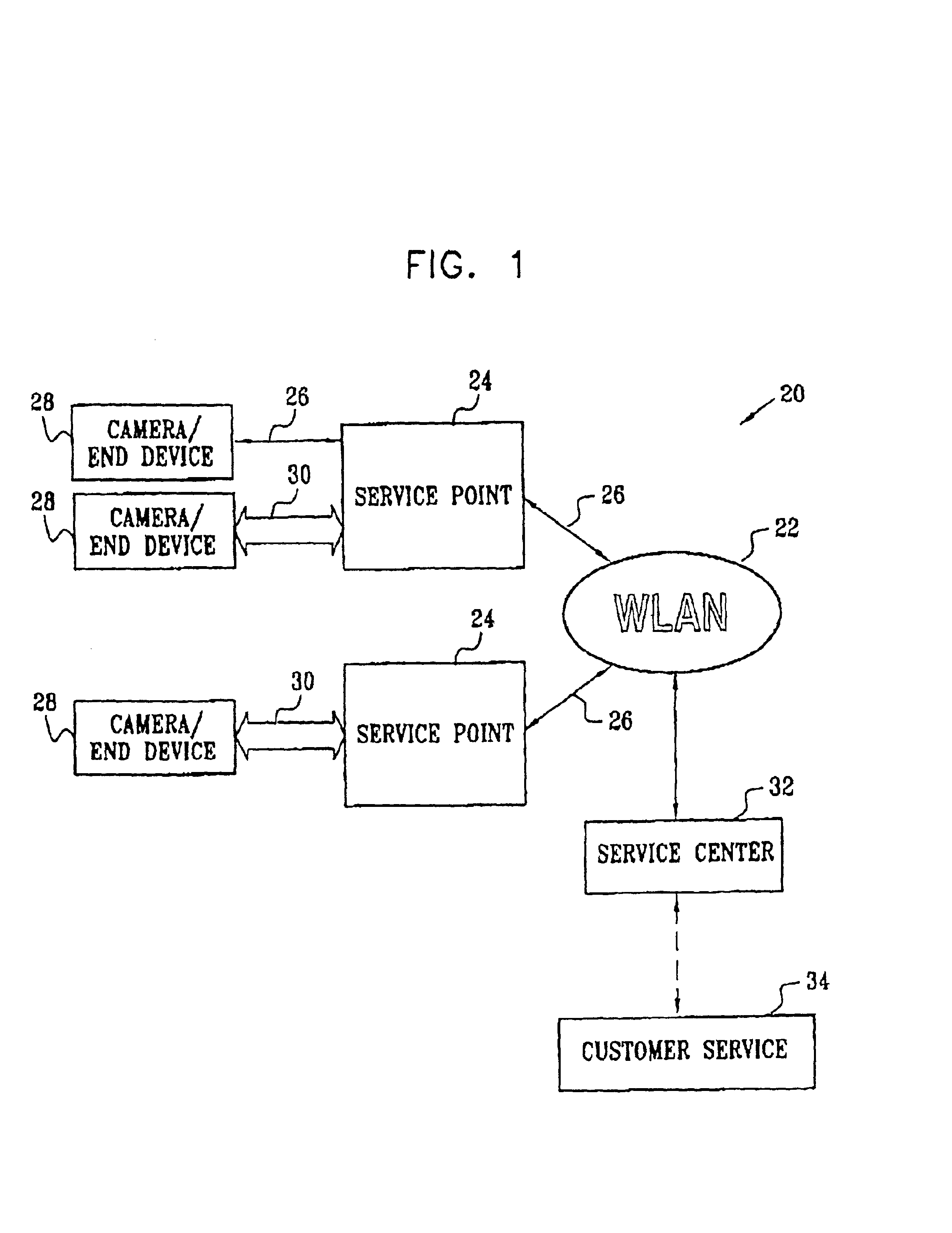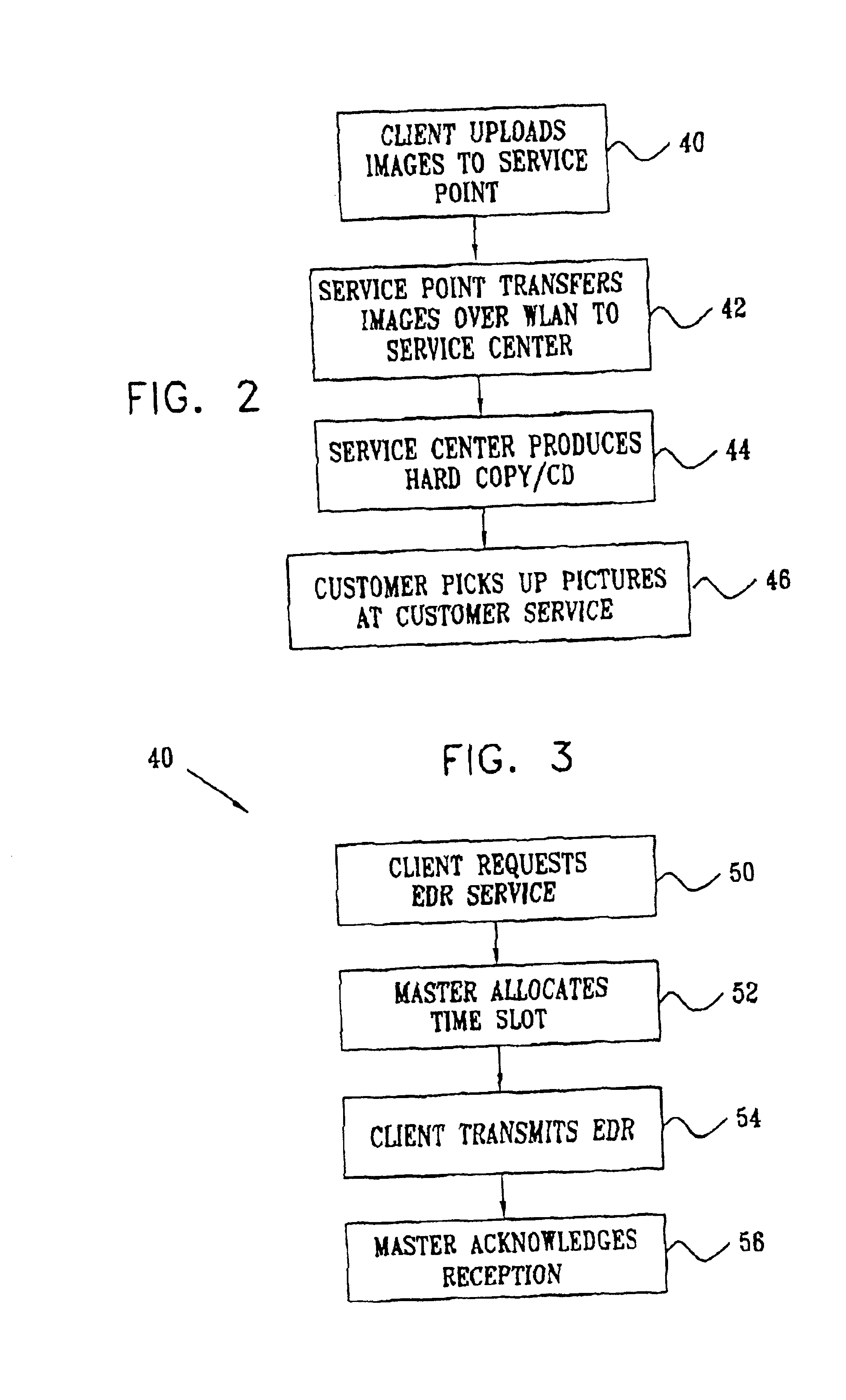Wireless network with enhanced data rate
a wireless network and data rate technology, applied in the field of high-speed wireless local area networks, can solve problems such as incompatibility with existing, lower-rate receivers or bluetooth protocols
- Summary
- Abstract
- Description
- Claims
- Application Information
AI Technical Summary
Benefits of technology
Problems solved by technology
Method used
Image
Examples
Embodiment Construction
[0045]FIG. 1 is a block diagram that schematically illustrates a system 20 for providing hard copies of digital images, in accordance with a preferred embodiment of the present invention. System 20 is typically deployed in a commercial establishment, such as a department store or shopping mall, and enables customers to submit their digital images via a WLAN 22 at multiple points in the establishment, while they are shopping. The customers then pick up their hard copies (or other media that they have requested, such as photo-CDs) when they are ready to check out of the establishment.
[0046]WLAN 22 preferably operates in accordance with the IEEE 802.11b standard, as described hereinabove, at a rate of 11 Mbps. Because of the large volume of data contained in digital images, however, one or more high-speed service points 24 are deployed in the establishment. The service points are equipped with wireless modems, as described hereinbelow, which are capable of operating at an enhanced data...
PUM
 Login to View More
Login to View More Abstract
Description
Claims
Application Information
 Login to View More
Login to View More - R&D
- Intellectual Property
- Life Sciences
- Materials
- Tech Scout
- Unparalleled Data Quality
- Higher Quality Content
- 60% Fewer Hallucinations
Browse by: Latest US Patents, China's latest patents, Technical Efficacy Thesaurus, Application Domain, Technology Topic, Popular Technical Reports.
© 2025 PatSnap. All rights reserved.Legal|Privacy policy|Modern Slavery Act Transparency Statement|Sitemap|About US| Contact US: help@patsnap.com



